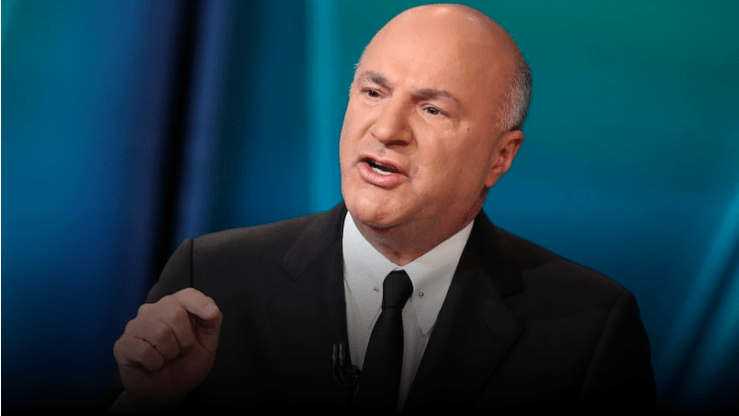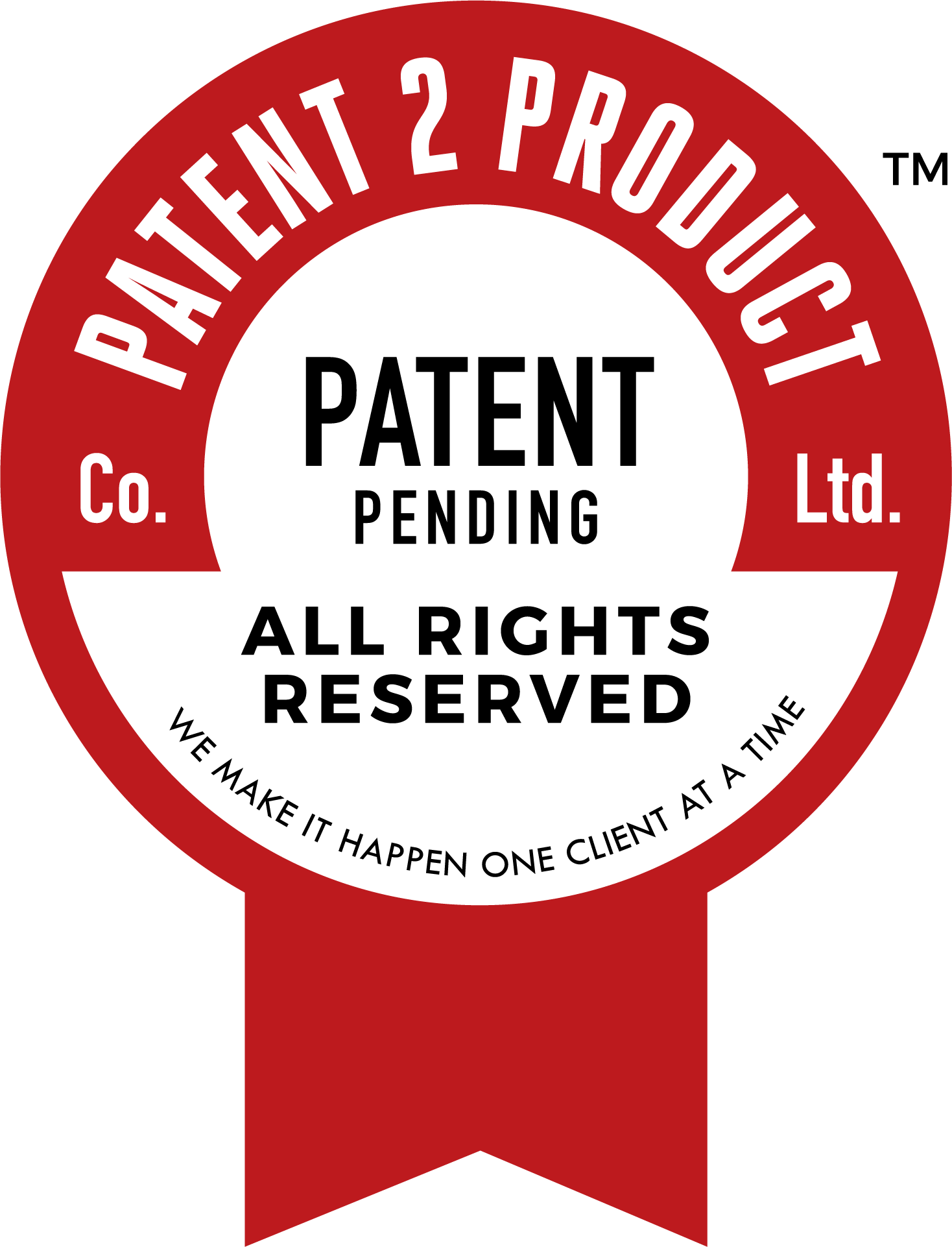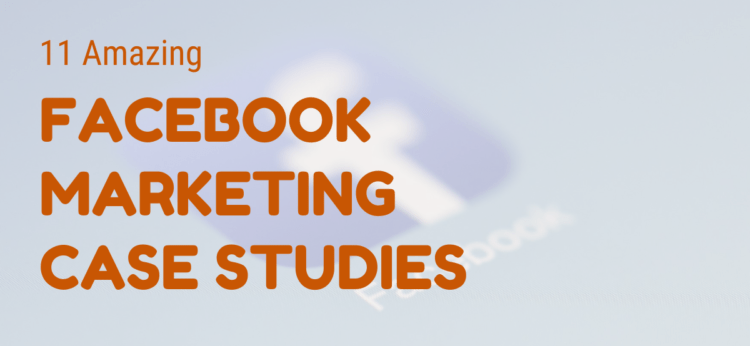
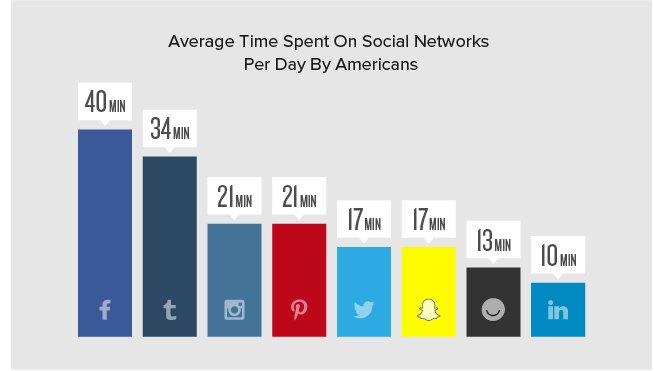
Before you read on - we have various resources that show you exactly how to use social networks to gain massive traffic and leads. For instance, check out the following:
FREE Step-by-Step Twitter Marketing Guide
FREE Pinterest Marketing Ebook
If you are not going to spend thousands of dollars on advertising that gets even harder – and the more important, it is to understand how it all works.
A wider reach for a post on a Facebook fanpage may become harder to get, but there are still some formats and types of updates on Facebook that can reach far.
While many Facebook users complain that their reach dropped, most of them do not (yet) utilize the fairly new features that Facebook offers that will not only help to increase engagement but also help to uphold or even grow the reach. And I am not talking all about advertising.
No matter what you do on Facebook, a key goal for your marketing updates should be engagement. And that is for more than one reason:
- Engagement is an important factor that decides how well your posts is received by the Facebook algorithm.
- Engagement also helps to build a relationship and convert more leads and customers.
Brands who are looking for Facebook marketing success need to be aware of what works and what their audience may like. There are some types of posts that on average fare far better than others – and successful brands consider this.

Video by far outperforms all other types of Facebook post formats. In fact, videos get 59% more engagement than any other types of post. Video even performs better than photos.
But there is another type of post or rather a place to post that can outperform what you have been doing on Facebook in the past: Facebook groups.
Hey, before you read on - we have in various FREE in-depth guides on similar topics that you can download. For this post, check out:
FREE workbook: CREATE AWESOME BLOG POSTS
FREE Beginner’s Guide: START A BLOG
Marketers view private community groups as one of the major trends in social marketing. That should be reason enough for you to take a closer look at Facebook groups if you have not done so in the past. We added some Facebook marketing case studies to this list that feature Facebook groups as the main focus.
But you don’t have to take my word for the possibilities you have with your Facebook marketing. There are more than enough examples of brands that are hitting it big-time on Facebook.
Please keep in mind that the benefits of using Facebook in your marketing strategy are not all about website traffic. A Facebook marketing strategy can also be about engaging with your target audience, increasing customer loyalty, lead generation, and interacting with your customer base. And Facebook is still one of the best social media platforms to achieve all of that.
Here are 11 examples of brands that win big with their Facebook marketing. Even if your situation is different, your budget not even worth mentioning and your existing fanbase a fraction of the brands in question – you can still learn from these amazing Facebook marketing case studies how to leverage the Facebook audience!
1. Starbucks – Case Study for Facebook Groups
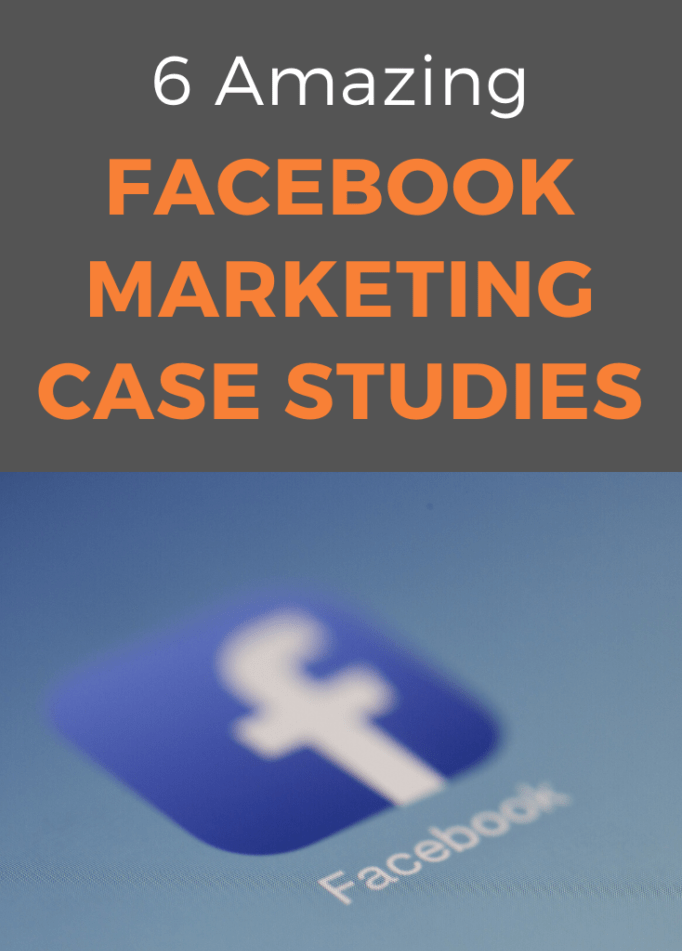
The pumpkin spice latte remains a seasonal drink to this day – and is eagerly awaited for fall 2020.
But what has Pumpkin Spice Latte to do with Facebook marketing? A lot.
In 2018 Starbucks launched a Facebook group for Pumpkin Spice Latte. The group is called “Leaf Rakers Society.” It is a group to celebrate fall – remember, the Pumpkin Spice Latte is a seasonal drink that can only be bought at Starbucks in fall…
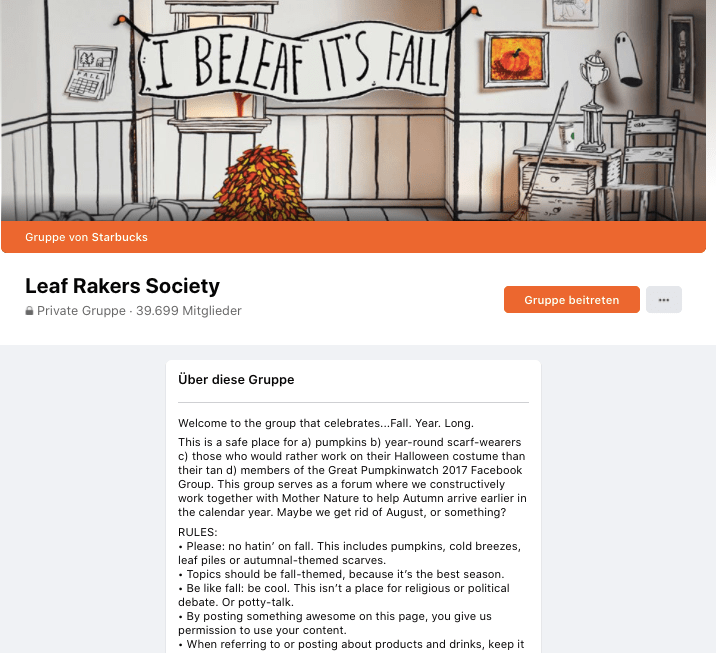
- for their seasonal drink, this group kept the love and excitement alive all-year-long.
- They do not post, they do not have to be active. The group members keep the group alive.
- They do not have to spend a dime in advertising – the popular topic allows them to do brand building based on member activity.
- They can build anticipation for the re-release of their famous drink every year by simply recommending new fall- and pumpkin-spice-lovers to the group – even from other social networks like Twitter.
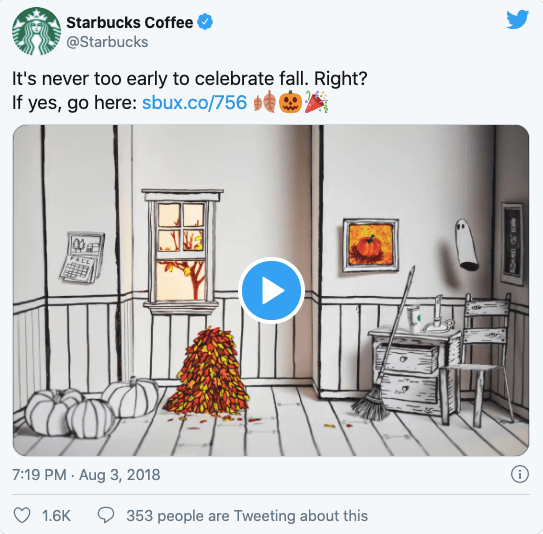
- Listening to their customers who keep talking about beveryge recepies and Starbucks products they get valuable insights into what their audience loves or hates, how they can improve – and maybe even get new ideas for the nest super product to sell
- All considered, the Facebook group for pumpkin spice latte lovers seems to do the trick for Starbucks.
2. Tomcat – Facebook Video Case Study
Facebook video and Facebook live video may sound a little intimidating and scary. So much may go wrong. And if it goes wrong everybody can see it.
But with a little creativity and some additional boost, there are awesome marketing results on the line.
So how about Halloween, mice, and a horror movie that develops as the audience comments on the video? This is an extraordinary example of creative content marketing utilizing one of the major trends in social media.
Tomcat is a company that focuses on rodent extermination. For Halloween 2016 they created a live video event featuring some mice in a haunted cabin. At some points in the story, the audience was asked how the story should develop: Which of the mice should die next and how should it be killed.
The video got 2.3 million unique views and an insane amount of 21% of viewers actively participated. the fanbase of the Tomcat Facebook page grew by 58%.
3. BuzzFeed -Facebook Live dance battle
This is another example of how brands can use Facebook live to engage with their audience and build brand awareness.
You probably all know BuzzFeed.
BuzzFeed used Facebook live to host an interactive dance battle called “Dance Craze Battle: Live” that asked the audience to vote on the performance of the dancers via the comments.
But they asked for even more engagement.
Instead of following a predefined schedule and guideline for the moves to be performed, they asked the audience to suggest dance moves that the dancers had to perform. And the audience complied, making the dancers perform things like “the crying college student.”
Between rounds, Buzzfeed took the opportunity to talk to the contestants and make their team more human.
In the second round of the battle, the viewers could see how the dancers performed their suggestions.
The engagement on the live videos helped keep the audience interested.
4. Hubspot – Facebook group example
In March 2020 the inbound marketing company Hubspot created a Facebook group for Marketers called Marketer to Marketer.

As with the Starbucks Facebook group for fall lovers, the Hubspot group is NOT a group to market Hubspot products. It is also not a Hubspot support group.
In fact, the group description explicitly states that the group is not monitored by the Hubspot support team.
Hubspot answers the why to the Facebook Group themselves: To build a community around their target group (=marketers.) Plus, since the reach for Facebook posts steadily declines they needed a new way of increasing engagement around their brand and product.
The impact of the group? Hubspot has close to 2 Mio followers on their Facebook fanpage. The group has just over 3200 members. The difference is too large to measure the impact of the group on Facebook engagement, reach or traffic.
However, they get direct access to members from their target group. They can interact and engage and earn valuable insights into the questions and topics on the mind of their marketing audience.
The Hubspot Facebook group is still very young but it already turned into a self-sustaining community. But it still needs ongoing promotion to keep it growing and prospering.
5. Real Estate – a Local Facebook Marketing Case Study
Looking at the other case studies, you may get the impression that you have to be a global player with a huge budget to utilize Facebook marketing. That is why I added this case study about a real estate company that wanted to increase local leads.
For this they used lead generation ads – this type of ad on Facebook already includes a contact form for which you can choose the questions to add.
The agency case study tells that the campaign generated 370 local leads in 90 days. Each lead cost 6,77$ on average.
Before you jump on the Facebook advertising train, please note that the case study does not disclose any ROI or value for the lead. I have no proof whatsoever that any dollar was ever earned with these leads.
And that is a major problem with lead generation on Facebook and you need to measure your results carefully: Leads need to make you money otherwise you will be on a straight path to bankruptcy as you pay for each lead in hard money.
6. Nike
Sure, Nike has a corporate page on Facebook. But Nike has so much more. They have specialized Fanpages for various sports like basketball, football, running, tennis, etc. Also, Nike has some pages for activity like the Nike+ Run Club. They have Nike Women. Plus they have several accounts for various products.
Why are they splitting up their marketing power this way?
Because it lets them target their audience much better. They can provide more value to the people. The sports channels give you news from your favorite sports without annoying half the audience with news from sports they are not interested in.
I have been part of the running initiative a while back when Nike had Women’s runs in various cities including my home town Berlin. These runs were perfectly organized inbound marketing campaigns that encouraged the participants to share photos and videos from the event all over social media. Nike even provided several on-location photo booths to make sure there where thousands of branded photos being passed around social media. And sure I was a fan of the related Fanpage eager awaiting updates on the next run.
With all these accounts – what is Nike talking about all day? What is their content strategy? Not their products – or not only their products. Nike products have a minor role in all this branding effort. No need to be overly promotional. A large number of updates is about news from sports or athletes that still builds brand awareness.

7. TOMS One-For-One Strategy

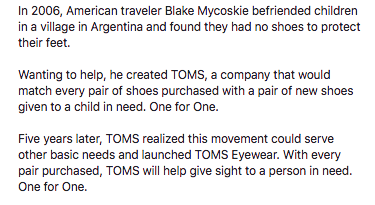 This strategy gives a lot of possibilities for stories to tell – each product in itself is a call-to-action to do something good. And this type of marketing campaign works on Facebook. They can announce new partnerships and products – people will like them and allow leveraging the good deed that is always included.
This strategy gives a lot of possibilities for stories to tell – each product in itself is a call-to-action to do something good. And this type of marketing campaign works on Facebook. They can announce new partnerships and products – people will like them and allow leveraging the good deed that is always included. 8. State Bicycle
Maybe it is because I am into sports myself – I love how State Bicycle work their Facebook page: Sure they have product updates. They also have announcements for races and news from the biking world.
What really gets their engagement going is their content strategy of photo contests, photo shoots and photos they share.

9. Tough Mudder
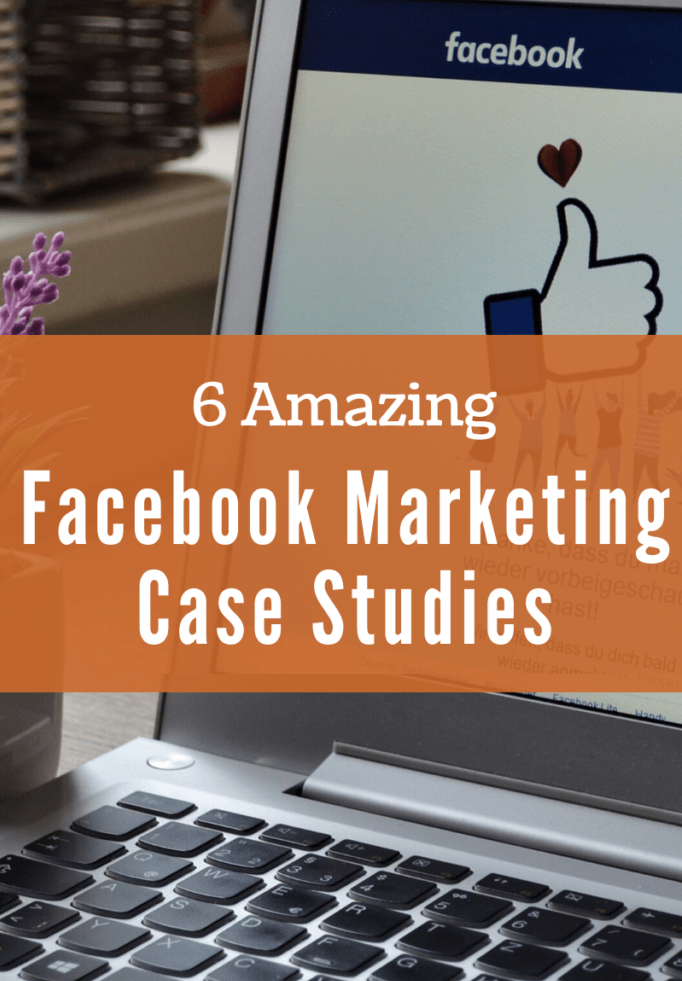
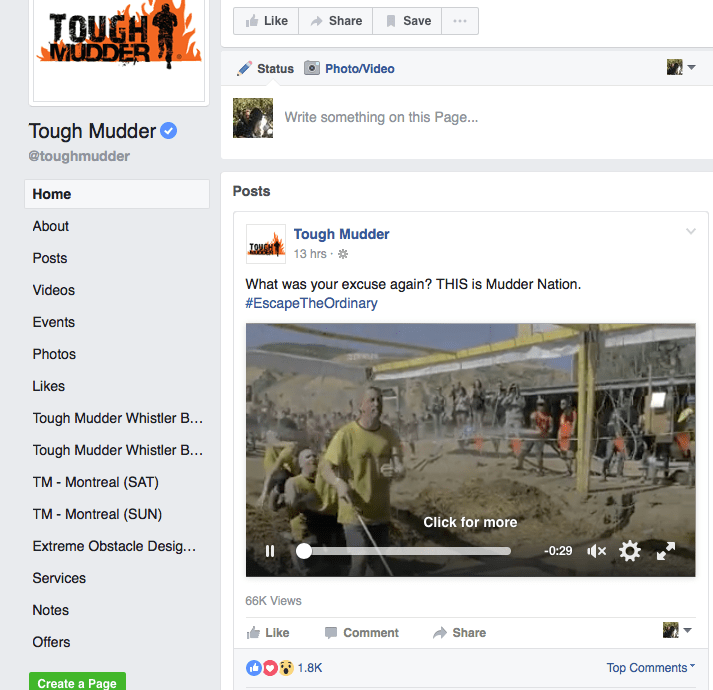
Also, they use Facebook advertising – as said before, I saw those ads multiple times. And maybe one day I will dare to go for one of the challenges… Let me first finish the Berlin Marathon in September 🙂
ToughMudder also uses Facebook video and Facebook live to cover its events. Since the Corona pandemic, there have not been any ToughMudder events but you can find some of the past videos.
They not only cover events but also live stream bootcamps.
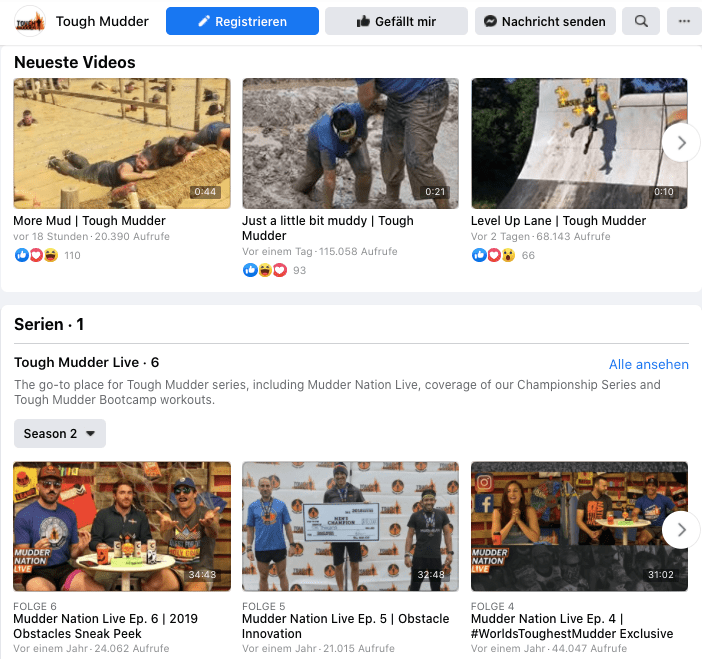
10. FitBit – Facebook marketing case study
This is more an example of a content marketing strategy with the aid of Facebook. FitBit mainly shares their own blog posts on their Facebook fanpage. And they manage to get high engagement. Nothing going viral but solid likes and shares.

How they do it?
They do not concentrate on their products. They share posts from the FitBit blog that cover everything fitness and healthy living related. And that topic simply rocks on Facebook.
Plus they are responsive in the comments.
Whenever a fan shares a story or personal experience in the comments, FitBit is there to comment and appreciate the openness.
That kind of interaction scores high with fans.
11. Always #LikeAGirl
I can still remember seeing this campaign for the first time. And it lured me in – as thousands and millions of others.
Always offers sanitary products for women, and in 2014 they decided to change the meaning of #likeagirl. At the center of their campaign was this powerful video.
The campaign achieved what it was meant to achieve: it connected the brand „Always“ with millions of teenage girls and young female adults with a strong message that empowered them and made them proud to be #LikeAGirl.
Final Words about Facebook marketing case studies
While Facebook isn’t up front on the list of hottest marketing trends, there are still thousands of brands successful on Facebook. And not all of them base their success solely on the size of their advertising budget. They succeed because they understand how Facebook works – and what their audience on Facebook wants and likes.
The biggest trend – and probably your biggest chance for marketing success without breaking the bank – currently are Facebook groups and Facebook video or rather Facebook live. That is why we added some Facebook marketing case studies that focus on Facebook groups and Facebook videos.
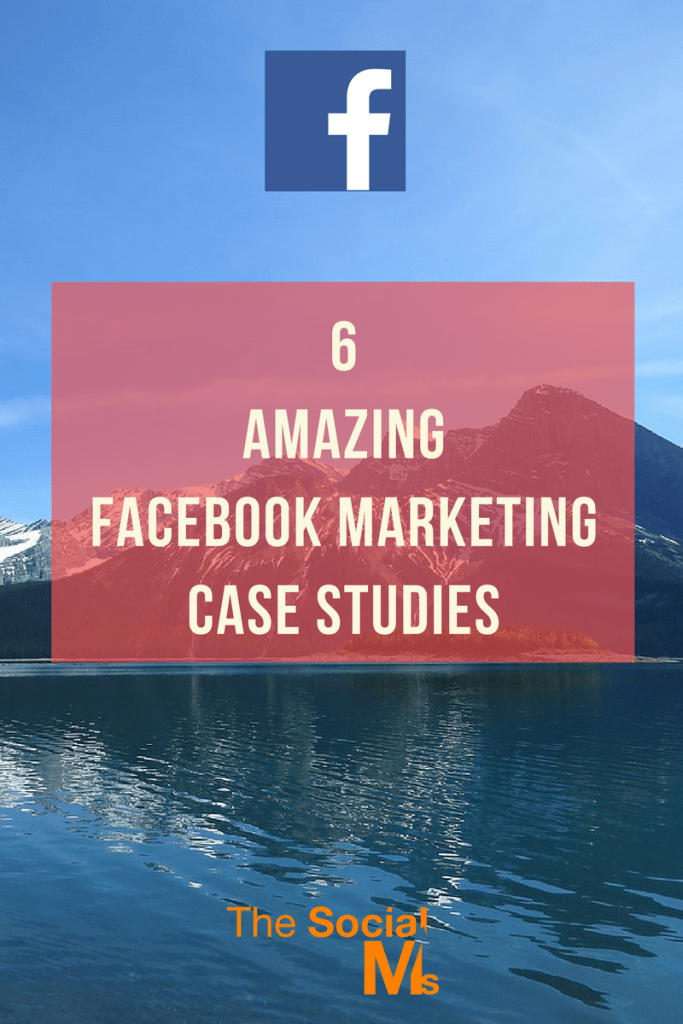
Before you jump into Facebook marketing and spend thousands on advertising because you read somewhere that Facebook marketing can only be successful if you pay for it – take a close look at some of these case studies and figure out what really makes them successful. It is the content they use, the engagement they drive, and fit between their updates and their target audience. Once, you understood what works for others figure out which marketing tactics resonate with your audience!
That is what Facebook marketing success is based on!
Are you dreaming of online success? You need traffic to your blog or website!
Getting free traffic from social media is absolutely possible. You just need to know what you have to do.
Here is the process that works for (almost) any niche and has the power to bring you huge amounts of traffic. We used these exact tactics to grow our first business to over 500k pageviews (wow – that was a ride!). We also used these tactics to get 50k visitors just 6 months after starting a totally new blog.
Do you want to get the foolproof process in easy to follow action plans? Check out “The Social Traffic Code!”
If you struggle with your traffic this is the answer: It was for us!



 The advisors at Patent 2 Product have sat on both sides of Walmart Buyer/Supplier meeting tables. Contact us about helping you prep for that first meeting or next line review). You’ve just finished the meeting with your Walmart Buyer. They walk you to the front lobby, shake hands, and you peel off your visitor’s sticker. As your team walks through the parking lot, how many times has one of you turned to the others and said: “Wow. I wasn’t expecting that.” “Is that new, or has it always been our responsibility?” “When I asked that last question, did you guys see the buyers look at each other?” It happens. We’ve all been in meetings where we wish we could turn back time ten seconds and remain silent. Unfortunately, there’s no supplier academy to tell you what not to ask in your buyer meeting! After talking with leaders who have participated in these meetings, here are their top picks for what your Walmart Buyer does not want to hear:
The advisors at Patent 2 Product have sat on both sides of Walmart Buyer/Supplier meeting tables. Contact us about helping you prep for that first meeting or next line review). You’ve just finished the meeting with your Walmart Buyer. They walk you to the front lobby, shake hands, and you peel off your visitor’s sticker. As your team walks through the parking lot, how many times has one of you turned to the others and said: “Wow. I wasn’t expecting that.” “Is that new, or has it always been our responsibility?” “When I asked that last question, did you guys see the buyers look at each other?” It happens. We’ve all been in meetings where we wish we could turn back time ten seconds and remain silent. Unfortunately, there’s no supplier academy to tell you what not to ask in your buyer meeting! After talking with leaders who have participated in these meetings, here are their top picks for what your Walmart Buyer does not want to hear: 








